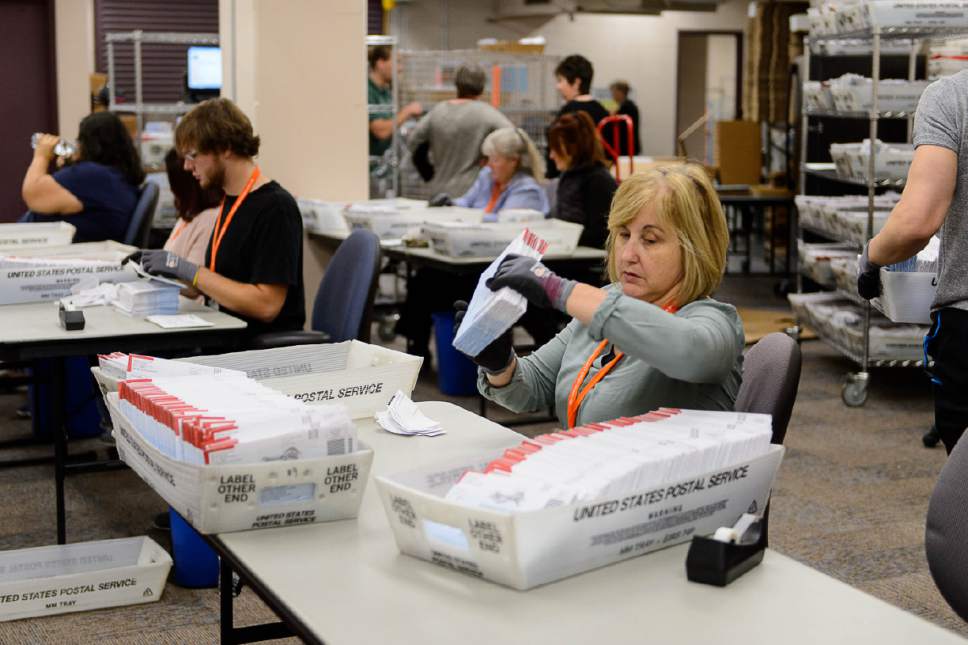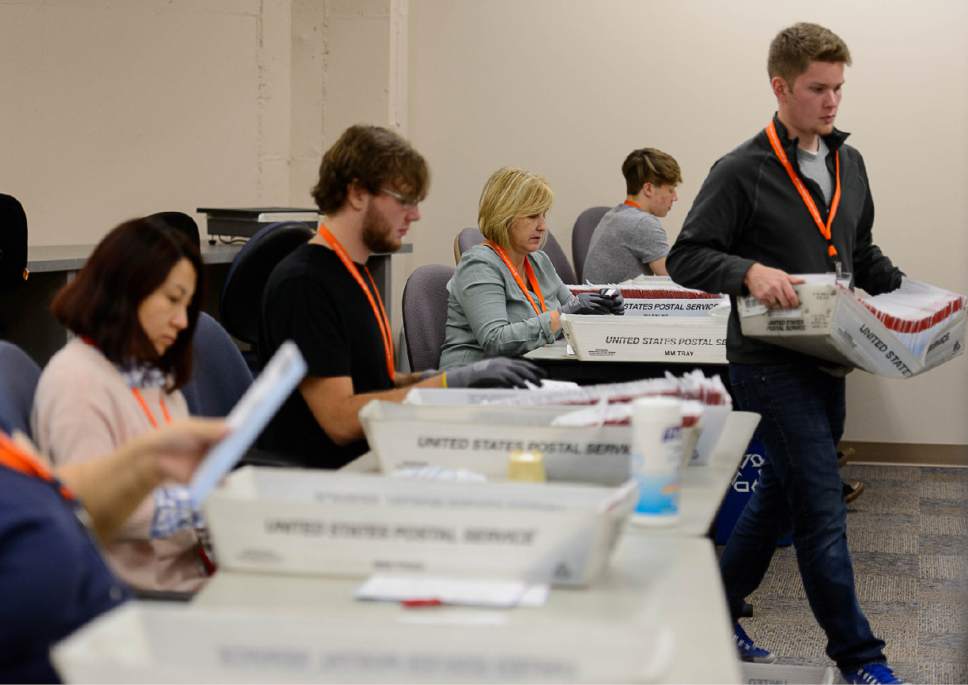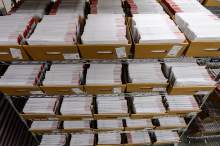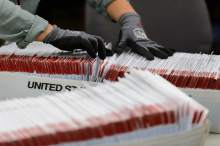This is an archived article that was published on sltrib.com in 2016, and information in the article may be outdated. It is provided only for personal research purposes and may not be reprinted.
Longtime Salt Lake County Clerk Sherrie Swensen worries about how few voters have returned by-mail ballots so far.
She says her office has received about 150,000 of the 490,000 that it mailed out three weeks ago, roughly 30 percent.
"We had hoped by now that we would have at least 200,000 ballots back," she said. "People are just waiting. I don't know why."
Mark Thomas, state elections director for Lt. Gov. Spencer Cox, said numbers are even lower statewide, with about 20 percent of ballots reported as returned in the 21 of 29 counties conducting by-mail balloting this year.
"People are still trying to weigh their options in the presidential race. Every day there is new information coming out. I think that doesn't help voters to decide," he said. "I think they are just waiting to see what else happens."
It's also possible that frustration with major presidential candidates Donald Trump and Hillary Clinton has made some voters decide not to cast ballots at all — but Swensen doesn't buy that.
"It doesn't coincide with the fact we have so many new registered voters, the likes of which I've never seen before," she said, pointing to some 30,000 new registrants since early September in her county.
Swensen and Thomas also worry that too many people in by-mail counties want to keep up the tradition of voting in person on Election Day.
Whatever the reason, Swensen and Thomas say, that waiting to return ballots may cause some significant problems and delays later.
"Returning ballots now gives us more time" to contact voters and fix such problems as forgetting to sign ballot envelopes or having a signature that does not appear to match the one on file, Swensen said. It will allow more ballots to be verified and counted by election night.
She said trying to vote on Election Day is a problem because Salt Lake County has only 37 voting centers that will operate then, not the hundreds used in past elections.
"The voting centers are meant to accommodate people who have misplaced their by-mail ballot," she explained, or the disabled who need a machine that offers audio and other options.
If a lot of people who seek traditional Election Day voting show up, Swensen warned, "we would have seriously huge waiting lines."
"If they want to vote in person, I encourage them to use early voting because it hasn't been crowded at all," she said. Her county offers 17 sites for early in-person voting. Those locations and sites in 10 other counties with early voting are listed online at vote.utah.gov.
Tuesday marks the final day to register online to vote or to register in person at a county clerk's office. However, some other options are available to those who miss the deadline.
Eight counties will offer Election Day registration as part of a three-year state experiment — Salt Lake, Cache, Davis, Kane, Millard, San Juan, Sanpete and Weber.
"People just need to bring identification and proof of residency to register and vote," Swensen said. Also, those people could also use same-day registration at early-voting centers — which will operate through Friday.
"After all is said and done, there's no excuse not to register and vote," said Judi Hilman, executive director of VOTERISE, a national group based in Utah that seeks to encourage more millennials to register and vote.
In the 2014 midterm election, Hilman noted, Utah's voter turnout was near the bottom in the nation, below 29 percent. For millennials ages 18 to 29 here, it was 8.1 percent — and 62 percent of Utah's people of color did not register to vote.









